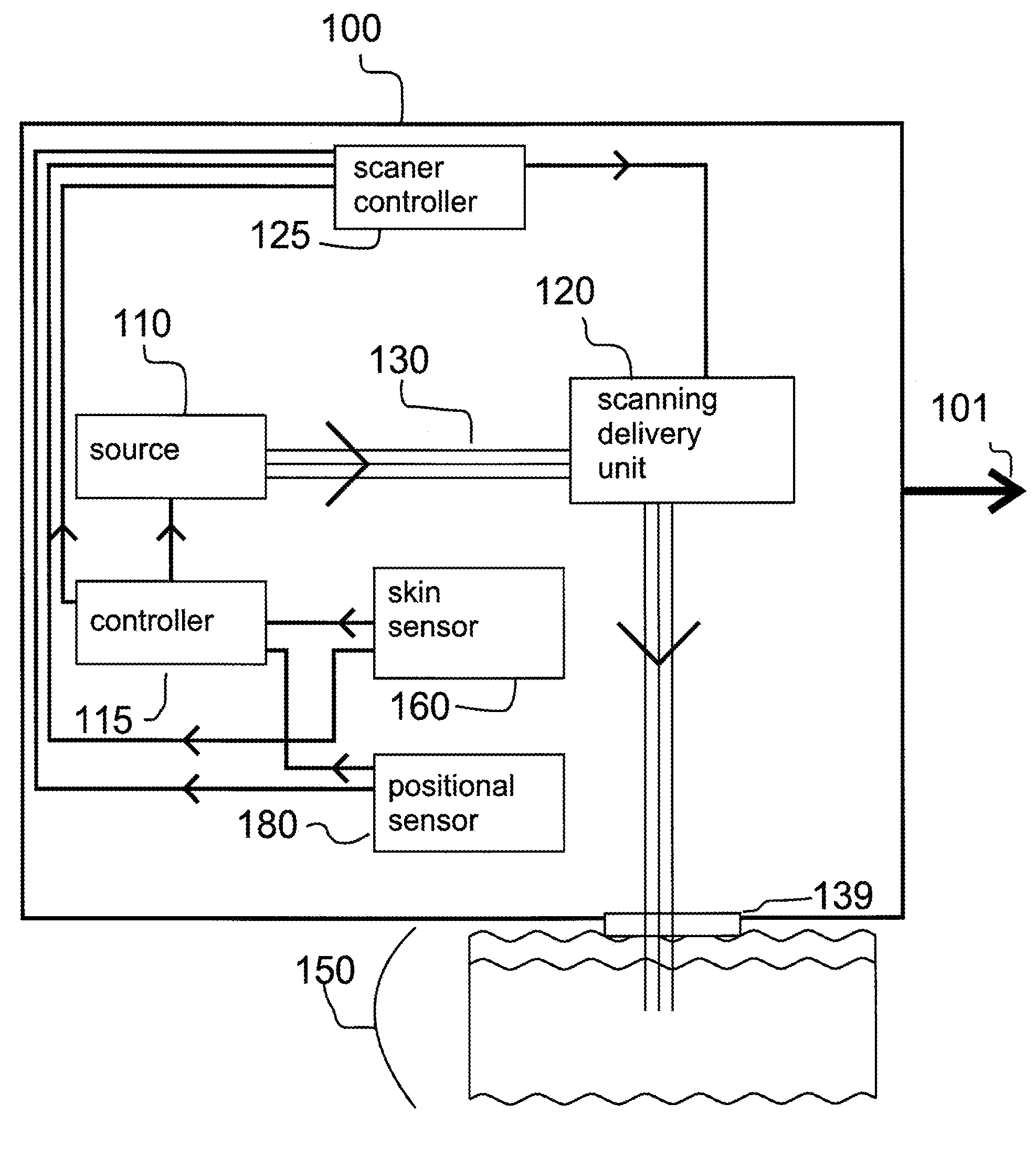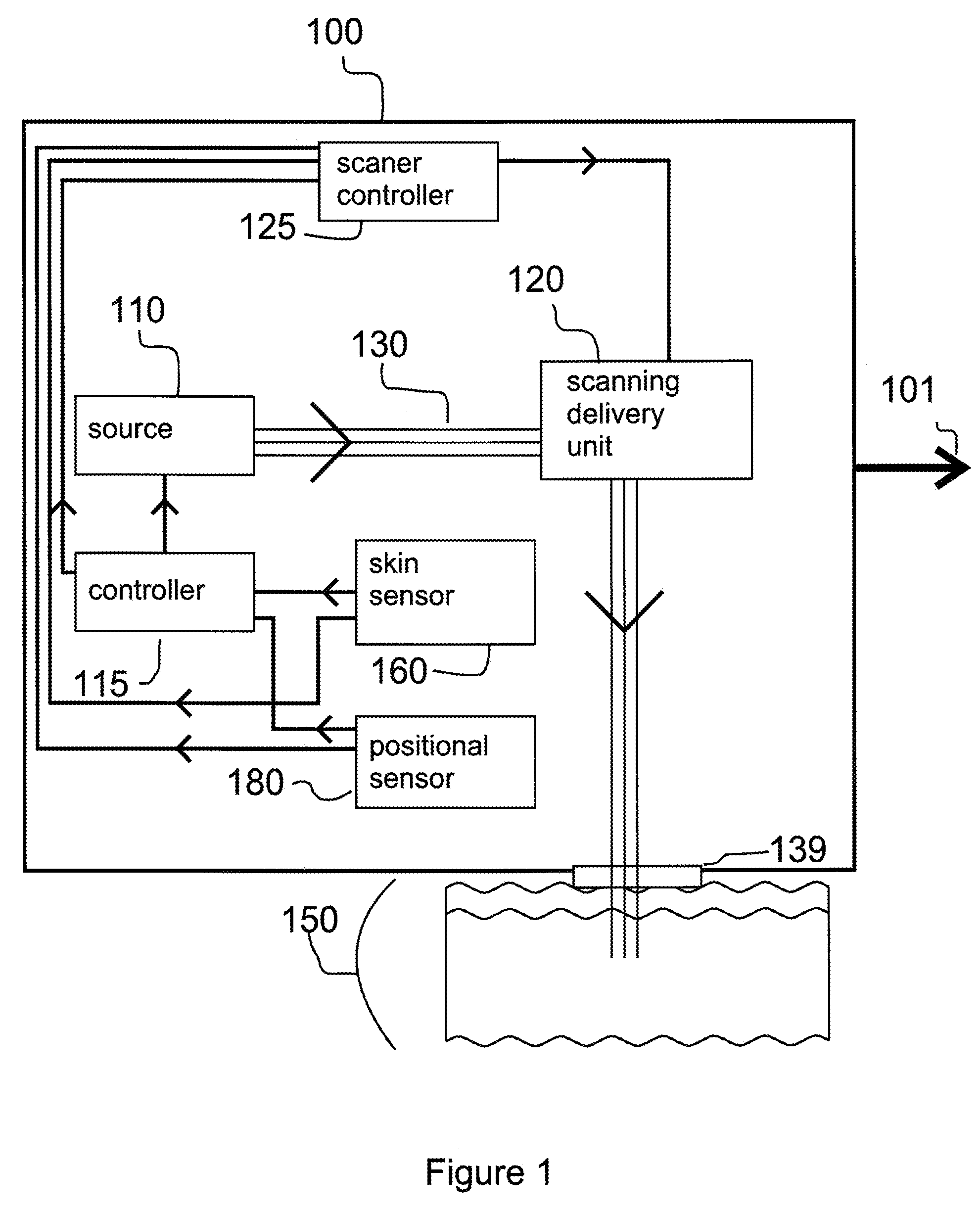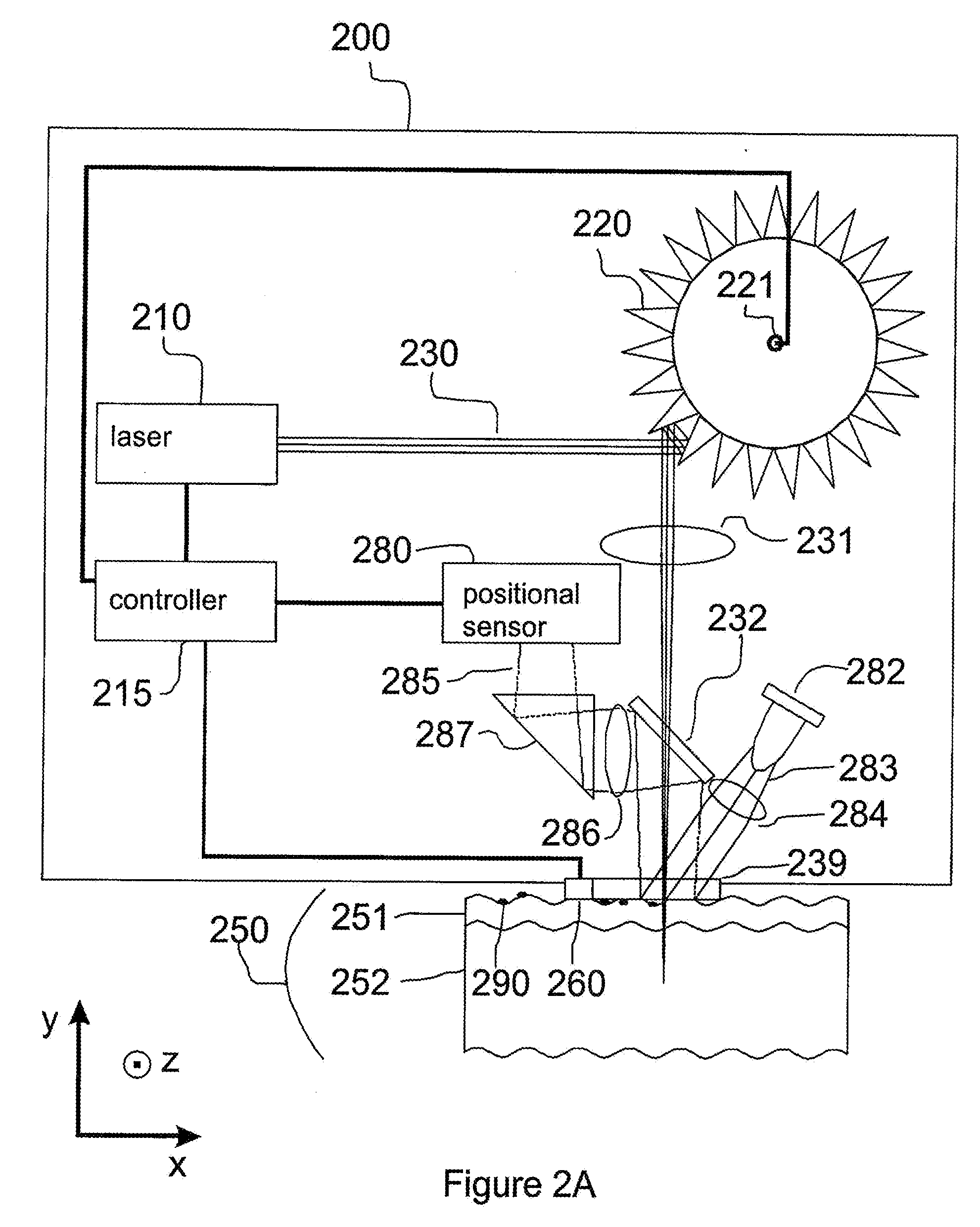Method and apparatus for monitoring and controlling density of fractional tissue treatments
a fractional tissue and density technology, applied in the field of fractional tissue density monitoring and controlling treatment density, can solve the problems of uneven treatment, over-treatment, or under-treatment, and not all patients respond the same way to the same level of treatment, so as to promote rapid healing of the wounded area, reduce the intensity of treatment, and increase the size of each treatment zone
- Summary
- Abstract
- Description
- Claims
- Application Information
AI Technical Summary
Benefits of technology
Problems solved by technology
Method used
Image
Examples
Embodiment Construction
[0041]This invention describes an electromagnetic system with automatic adaptive control of fractional (photothermal and / or RF) treatment density, as well as a method of treating tissue in a fractional manner using an electromagnetic system with automatic adaptive control of treatment density. Treatment density is the number of treatment zones produced per unit surface area in a target region of skin or portion thereof. A nominal pattern and treatment density can be defined when the system begins treatment and this treatment density can be modified based on a measured position of the handpiece, an intrinsic characteristic of the tissue undergoing treatment and / or a change in an intrinsic characteristics of the tissue, a skin response to the treatment and / or a change in a skin response to the treatment. Sensors of various types can be used to determine the measured position parameter, skin characteristic and / or skin response. Algorithms that describe the positional parameter, skin ch...
PUM
 Login to View More
Login to View More Abstract
Description
Claims
Application Information
 Login to View More
Login to View More - R&D
- Intellectual Property
- Life Sciences
- Materials
- Tech Scout
- Unparalleled Data Quality
- Higher Quality Content
- 60% Fewer Hallucinations
Browse by: Latest US Patents, China's latest patents, Technical Efficacy Thesaurus, Application Domain, Technology Topic, Popular Technical Reports.
© 2025 PatSnap. All rights reserved.Legal|Privacy policy|Modern Slavery Act Transparency Statement|Sitemap|About US| Contact US: help@patsnap.com



